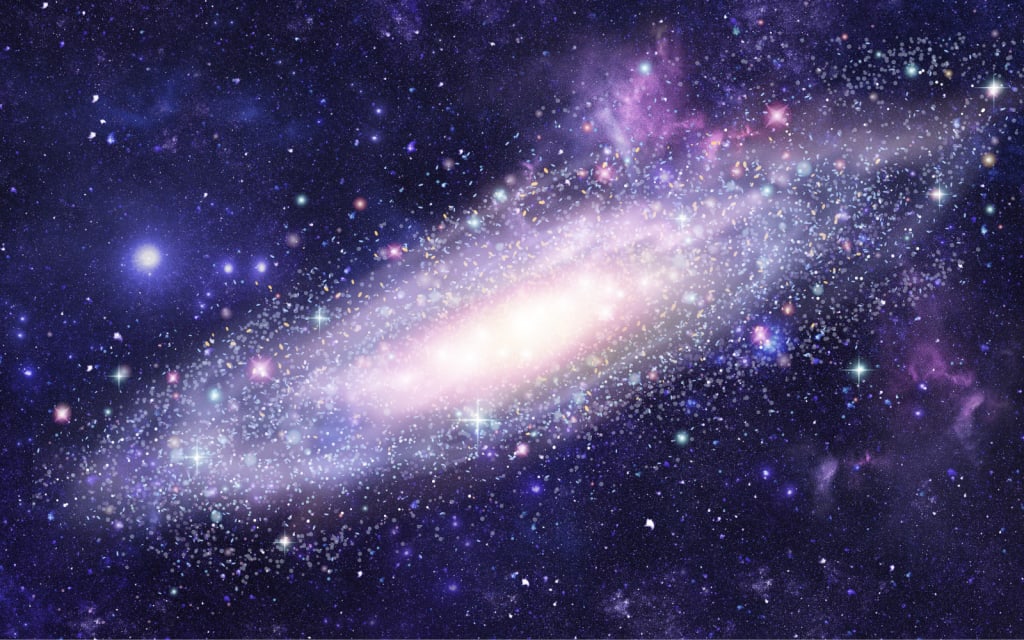Content warning
This story may contain sensitive material or discuss topics that some readers may find distressing. Reader discretion is advised. The views and opinions expressed in this story are those of the author and do not necessarily reflect the official policy or position of Vocal.
Possible processes for the generation of intermediate-mass black holes in globular clusters are illustrated by simulations.
The generation of intermediate-mass black holes in globular clusters are illustrated by simulations.

The properties of intermediate-mass black holes, or IMBHs, have long captivated astronomers. With masses ranging from hundreds to thousands of solar masses, IMBHs are a more elusive class of black holes than stellar-mass black holes, which are formed when huge stars collapse, and supermassive black holes, which are found at the centers of galaxies.
More recently, models have provided insight into the possible formation procedures of these mysterious objects, especially in the intense star environments of globular clusters.
Understanding Globular Clusters
A globular cluster is a spherical group of stars that are firmly held together by gravity. They have hundreds of thousands of stars and are generally quite old, often older than 10 billion years.
Because of their high star concentrations and diverse stellar populations, these clusters are ideal for researching stellar dynamics and evolution.
The Challenge of IMBH Formation
There are various theoretical obstacles in the way of IMBH creation in globular clusters. A problem to explain the formation of black holes in the intermediate mass range is faced by traditional star evolution models.
Then again, new advancements in computational reproductions offer persuading situations that could bring about IMBH creation in these thick star groups.
Reenactments Disclose Potential Components
1. Runaway Crashes: The out of control impact situation is a notable thought that is supported by recreations. Stars can impact and converge at the thick center of a globular bunch, leading to stars that are perpetually monstrous.
A very huge star may ultimately arise because of this chain response, and it might fall straight into an IMBH.
2. Mass Isolation and Center Breakdown: Mass isolation is a recreation driven peculiarity in which heavier stars steadily move towards the center of the group.
This cycle raises the chance of center crashes and consolidations, which could bring about the formation of an IMBH. Moreover, the circumstances expected for IMBH creation might be additionally worked with by the group’s middle imploding because of gravitational connections.
3. Accumulation onto Heavenly Mass Dark Openings: As per recreations, dark openings that are as of now present in globular bunches might extend by engrossing gas and consolidating with other dark openings.
An IMBH might create because of this sluggish collection process. A globular bunch’s thick star climate offers many opportunities for these sorts of consolidations and growth to happen.
Observational Proof
Albeit observational proof for IMBHs in globular groups is as yet sparse yet expanding, reenactments offer wise data. Backhanded proof for the presence of IMBHs comes from ongoing location of gravitational waves coming about because of dark opening consolidations.
Moreover, a few globular groups show X-beam outflows and dynamical propensities reliable with an IMBH, demonstrating the presence of a middle mass item.
Future Possibilities
Further developed innovation for perception, such the James Webb Space Telescope and cutting edge ground-based observatories, ought to give more grounded confirmation of IMBHs in globular groups.
With the utilization of these instruments, space experts will actually want to look all the more carefully at these thick star groups and potentially track down direct proof of IMBHs.
In outline
Astronomy’s most fascinating unanswered subject is the way middle of the road mass dark openings foster in globular groups. Phenomenological systems, going from growth cycles to out of control crashes and center breakdown, have been introduced by recreations.
The secret encompassing IMBHs may before long be tackled as observational techniques improve, giving new viewpoints on the elements of globular bunches and the lifetime of dark openings.
Grasping these systems upgrades how we might interpret the age of dark openings and explains the complicated association between star elements in the absolute most old and puzzling articles in the universe. Start writing...
About the Creator
RAMZAN ALI
lo! I'm Ramzan, a passionate writer with a diverse background and a love for exploring various topics.
My writing journey has taken me through the realms of technology, science, lifestyle, travel, and more.
Enjoyed the story? Support the Creator.
Subscribe for free to receive all their stories in your feed. You could also pledge your support or give them a one-off tip, letting them know you appreciate their work.






Comments
There are no comments for this story
Be the first to respond and start the conversation.